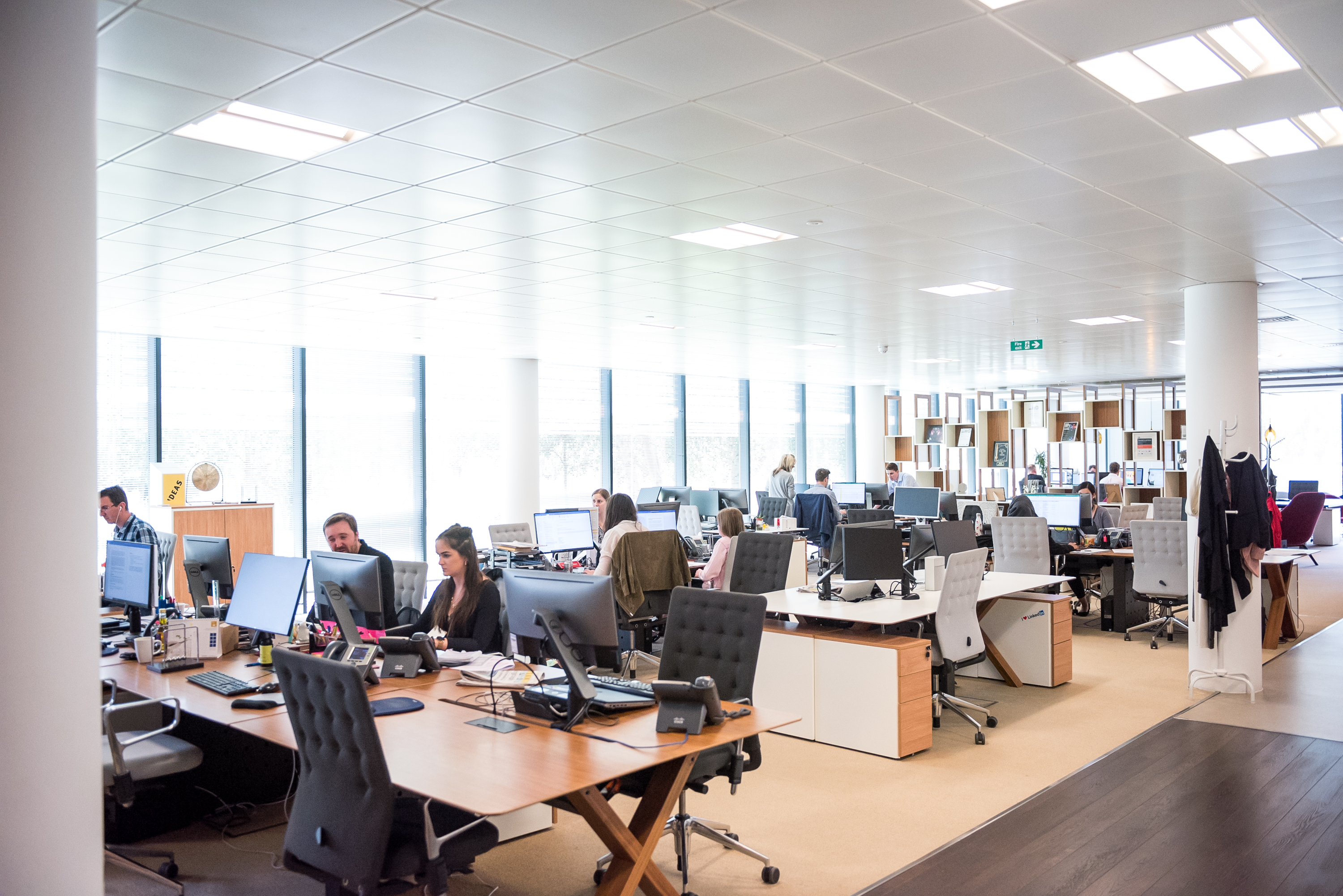Smart Lighting - New Regs Newsletter
In June 2022, new requirements outlined in the 2021 edition of Part L Building Regulations came into effect in England. Here, we will focus on the commercial property/non-residential sectors.

Many of the changes focus on making new constructions more sustainable. Non-domestic new builds must produce 27% fewer CO2 emissions than previous standards while existing buildings need to install new controls that improve the efficiency of their heating and hot water boiler systems. However, an important amendment impacts the management of lighting inside non-domestic new builds.
Changes will have a wide impact throughout the design, development, build and operation of new buildings so it’s essential to prepare now to guarantee future compliance.
In previous Building Regs editions, there were no specific requirements for lighting controls, and the use of high-efficacy lighting was seen as enough to comply. This is, however, a missed opportunity as using smart lighting controls demonstrably enhances energy savings and visibility. It is therefore imperative to upgrade the existing lighting infrastructure to an efficient, networked, and intelligent lighting system to maximise your energy-saving strategy.
The environmental impact of lighting
CIBSE has focused much attention on the heating and ventilating changes of Part L, rather than lighting control, however, lighting can be one of the single biggest energy consumers, and expenses, within an organisation.
Lighting accounts for around 20% of all the electricity used in an average UK office building, this figure can more than double in specialised settings such as healthcare facilities and hotels. (Carbon Trust) So, it’s imperative to effectively reduce consumption, especially now that energy prices are going through the roof while maintaining productivity and customer experience.
There’s huge business value in being energy efficient and using smart technologies such as Energy-saving lighting, use of natural light and movement sensors.
The rules change to specify the need for a lighting control system, but organisations should see the value in going beyond ticking regulatory boxes.
The impact of smart lighting controls
A lighting control system allows organisations to manage the lifetime light output of luminaries, across their properties or portfolios.
This begins with the installation of both single room and whole building solutions. Then, facility managers can remotely monitor and proactively adjust levels of electric light and daylight from their computers, while reporting and analysing usage for future optimisation.
This extra control helps to slash electricity waste and boost energy savings, while transforming occupant productivity and wellbeing, too. For instance, managers can nurture well-being in indoor spaces with tuneable white and warm dimming tools. controllable window blinds will offer better privacy in occupied meeting rooms, and greater visibility in a presentation space. They can optimise natural light on brighter days to reduce eye strain and headaches and boost staff and visitor wellbeing.

The emergence of the Internet of Things (IoT) paves the way for smarter solutions that deliver efficient lighting while also ensuring optimal energy consumption.
Our Smart Lighting Stack from Inferrix offers a lighting management solution for both Indoor and Outdoor Lights that covers detailed LED level management capabilities – Wireless Smart Lighting Nodes, Wireless Relay Controllers, Wireless PIR, LUX, Switches and Gateway with BACnet/IP & MQTT. The Inferrix Smart Lighting central management software allows dimming schedules, automatic identification and report of lamp failures, real-time control, automatic measurement of energy consumption, and much more.
Our Inferrix Platform is built on the leading wireless protocol provided by Wirepas allowing rapid installation and deployment in a building with minimum disruption to new and existing buildings.
The Inferrix Smart Lighting Stack provides a robust IoT mesh network for over 20 Wireless sensors & actuators Inferrix manufactures, to provide data that is seamlessly transferred to the cloud and presented in our smart platform for Facility Management and building owners to understand their buildings better. If you already have an existing IoT/BMS platform, the Inferrix Platform can transfer the data to be represented on your IoT/BMS of choice, over MQTT, REST or BACnet/IP/
The wide range of sensors allows you to monitor the environment and connect to building services, such as lighting and HVAC, to turn them on or off, or dim the lighting, depending on the conditions within the building space – both wired & wireless options are provided by Inferrix.
Lighting is often over-specified, and spaces are overlit, causing issues beyond the waste of energy. Overlit spaces can often result in uncomfortable glare on computer screens, and like underlit spaces, can impact health, wellbeing, and productivity.
Minimum lighting values will be 80 luminaire lumens per circuit watt for display lighting and 95 luminaire lumens for general lighting. Spaces must not be over-lit, and each lighting circuit must have a kw/h meter unless a lighting control system that can calculate and share the energy usage is installed. Meanwhile, the tools used to verify compliance of a building (SBEM) will also expect the use of occupancy detection and daylight sensors.

Wider context and Smart Places
Real-time data from our extensive range of cost-effective IoT Sensors can be presented in many formats, integrated into Building Management systems, & Data Visualisation Products or through bespoke Dashboards which can be honed to meet individual needs depending on responsibilities, from detailed views for a building manager to aggregated high-level views across a portfolio or estate.
From the CEO to business analysts, field-based staff, suppliers, and partners, everybody needs access to the right information, in the right format at the right time
Proactive & Predictive vs Reactive & Expensive
Building Intelligence for Decision Makers ... Meeting the needs of ESG Reporting, Ethical Data and Sustainability Management
- forms part of any modern health and safety strategy
- self-communicating wireless mesh sensors
- real-time site fabric, asset, and utility monitoring
- geared to achieving energy savings and efficiencies
- real-time analysis and reporting
- environmental, sustainability & wellbeing
- cleaning cycles, usage patterns
- indoor air quality
- people flow
- condition monitoring
- building integrity
Monitor - Communicate - Action
We help
you identify & quantify risk, by integrating IoT sensors with data to
deliver essential information, visualisations & timely alerts. Supporting evidence-based
decision-making for asset management & ethics-based ESG Reporting. You
control who sees what, sharing, privacy settings, & security
Stick - Clamp - Start
Real-time data from our extensive range of cost-effective IoT Sensors can be presented in many formats, integrated into Building Management systems, & Data Visualisation Products or through bespoke Dashboards which can be honed to meet individual needs depending on responsibilities, from detailed views for a building manager to aggregated high-level views across a portfolio or estate.
Sensors can be added or deleted, and the network automatically re-configures without any break in coverage. Each sensor in the mesh network relays information and acts as a router to ensure the information reaches the final destination.
If you would like to get more information about Smart Place, Smart Lighting and Building Intelligence, please contact us using the link to our Contact Page


